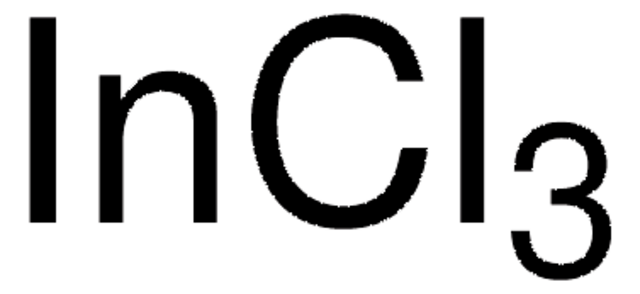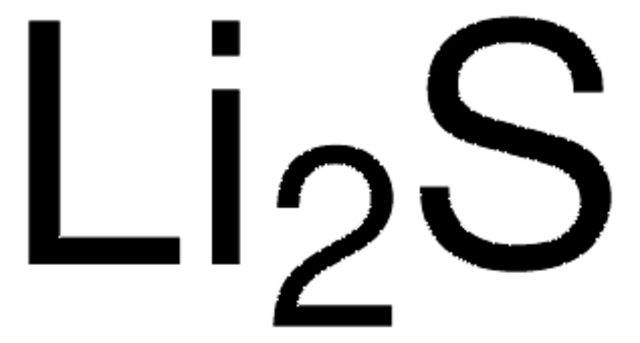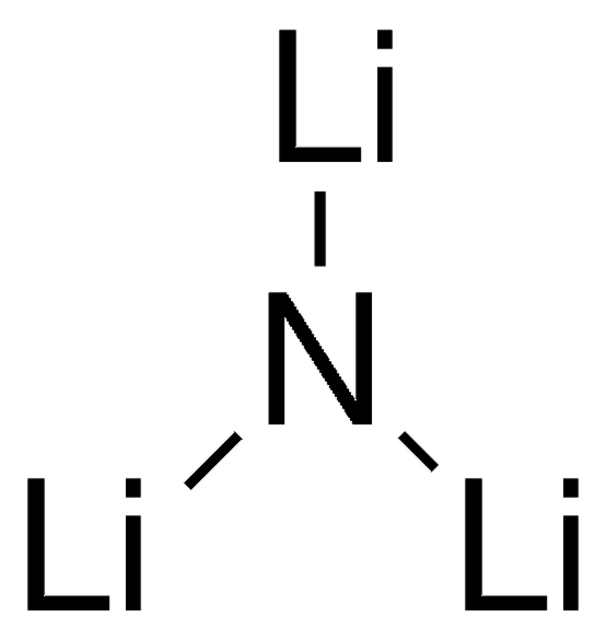916013
Lithium chloride
anhydrous, 99.95% trace metals basis
Sinônimo(s):
Lithium monochloride, NSC 327172
About This Item
Produtos recomendados
grau
anhydrous
Nível de qualidade
Ensaio
99.95% trace metals basis
Formulário
crystals
características do produto alternativo mais ecológico
Design for Energy Efficiency
Learn more about the Principles of Green Chemistry.
sustainability
Greener Alternative Product
pf
605 °C (lit.)
categoria alternativa mais ecológica
cadeia de caracteres SMILES
[Li+].[Cl-]
InChI
1S/ClH.Li/h1H;/q;+1/p-1
chave InChI
KWGKDLIKAYFUFQ-UHFFFAOYSA-M
Procurando produtos similares? Visita Guia de comparação de produtos
Categorias relacionadas
Descrição geral
We are committed to bringing you Greener Alternative Products, which adhere to one or more of The 12 Principles of Greener Chemistry. This product has been enhanced for energy efficiency. Click here for more information.
Aplicação
Características e benefícios
- The anhydrous form of lithium chloride guarantees the absence of moisture, essential for preserving battery efficiency and averting undesired side reactions. Its anhydrous nature enhances reactivity, rendering it suitable for moisture-sensitive processes.
- The 99.95% purity minimizes contamination from trace metals, ensuring suitability for applications sensitive to even minute impurities.
- It contains less than 0.6% water to develop a more efficient battery component.
Palavra indicadora
Warning
Frases de perigo
Declarações de precaução
Classificações de perigo
Acute Tox. 4 Oral - Eye Irrit. 2 - Skin Irrit. 2
Código de classe de armazenamento
13 - Non Combustible Solids
Classe de risco de água (WGK)
WGK 1
Ponto de fulgor (°F)
Not applicable
Ponto de fulgor (°C)
Not applicable
Escolha uma das versões mais recentes:
Certificados de análise (COA)
Não está vendo a versão correta?
Se precisar de uma versão específica, você pode procurar um certificado específico pelo número do lote ou da remessa.
Já possui este produto?
Encontre a documentação dos produtos que você adquiriu recentemente na biblioteca de documentos.
Global Trade Item Number
| SKU | GTIN |
|---|---|
| 916013-250G | 4061842493210 |
| 916013-50G | 4061842493227 |
Nossa equipe de cientistas tem experiência em todas as áreas de pesquisa, incluindo Life Sciences, ciência de materiais, síntese química, cromatografia, química analítica e muitas outras.
Entre em contato com a assistência técnica








